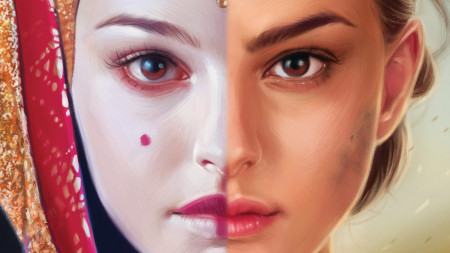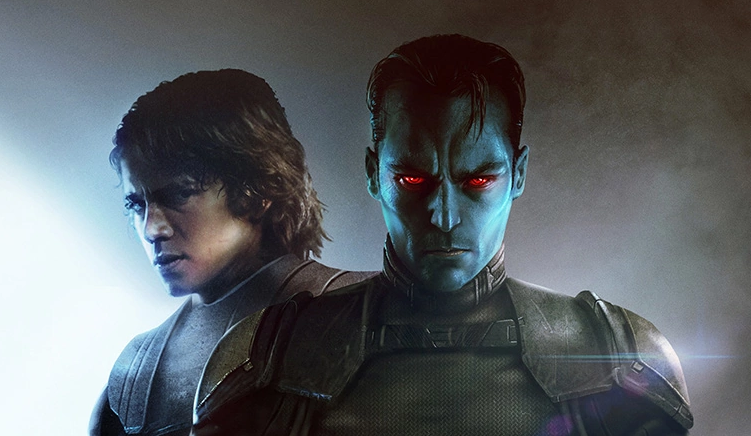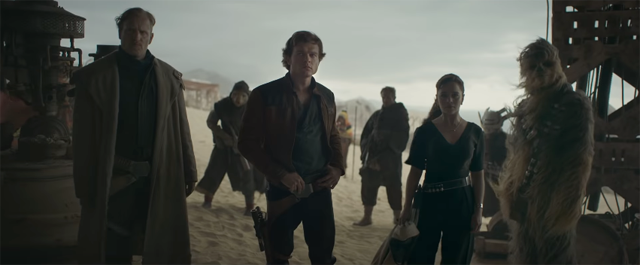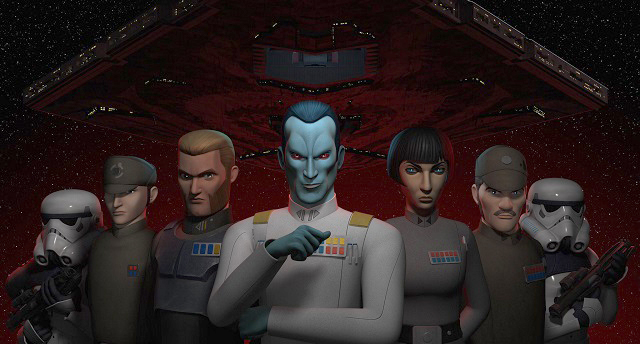
The intro, first section, and conclusion are spoiler-free. The second section will discuss spoilers and will have a separate spoiler warning.
We have been waiting a very, very long time to get a Padmé book. She’s been in plenty of books, comics, and TV shows — including a plethora of Phantom Menace-era books that a whole generation of fangirls has seemingly grown up on. But she’s never gotten the central billing in a book before. In situations like this, we usually end up with a typical “too little, too late” entry. Well, it’s definitely late — but the twentieth anniversary of The Phantom Menace‘s theatrical release isn’t a half-bad time to celebrate Padmé, given that the people who grew up with her never forgot about her. As for too little? Oh no — Queen’s Shadow is far from too little. In fact, it might be the perfect book for Padmé to finally get her due.
There are a lot of parts of this book that read like a love letter to Padmé fandom, handmaiden fandom, and the women who grew up as part of both. I’m not the best person to speak to that aspect of the book, although I can definitely see parts of it. There’s probably more there that I haven’t even noticed: things like how Padmé interacts with her friends and handmaidens (for they are both), things about female comradeship and navigating situations that I just couldn’t know anything about. You’ll hear plenty about that from people who are better equipped to discuss it than I am — in fact, check back here tomorrow for a piece on the handmaidens and what they mean to their fans. But what I can tell you is that anyone who is a fan of Padmé as a character, a fan of her faith in political idealism and willingness to get her hands dirty despite of it, and heck, even just a fan of Naboo, will love what E.K. Johnston did for Padmé in this book.
A lot of times it felt like the films after The Phantom Menace weren’t quite sure what to do with Padmé. She had a lot of potential that was sidelined in the other two films. But despite that, she was still a key part of the prequel trilogy and she had great development in Clone Wars-era books, comics, and TV despite rarely getting to headline stories. Queen’s Shadow recognizes both these things: the unrealized potential and the potency of the character, and does them justice. It’s set like a bridge novel between Episodes I and II, giving her the post-TPM development that Anakin and Obi-Wan received almost twenty years ago. But Queen’s Shadow isn’t just “Padmé’s turn” — it’s a genuinely incisive look at her character. Despite taking place between I and II, the novel also engages with ideas the audience knows will come up in The Clone Wars and in Episode III. E.K. Johnston just gave us a well-rounded portrayal that does everything it should have, and exceeded my already high expectations.




